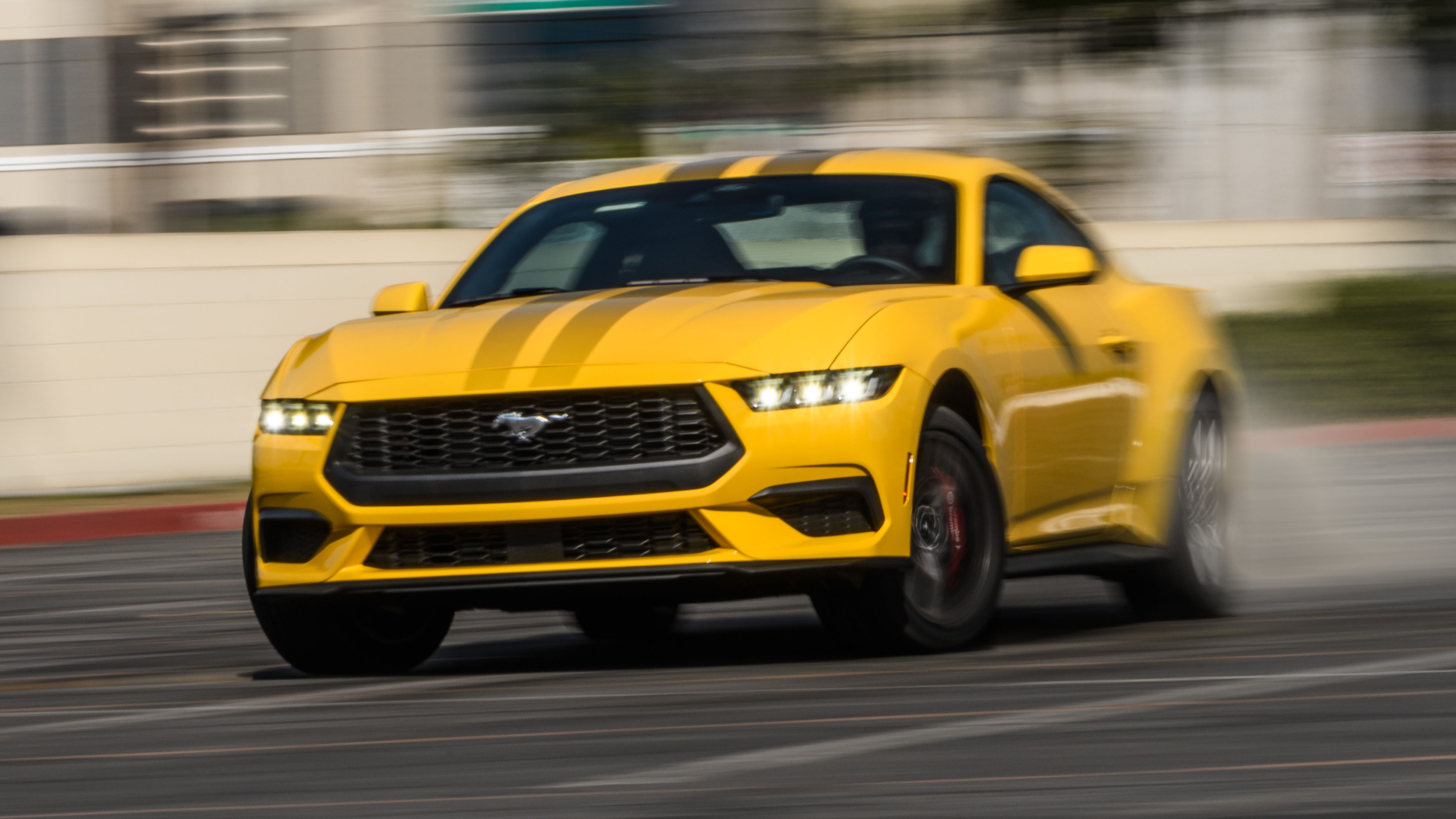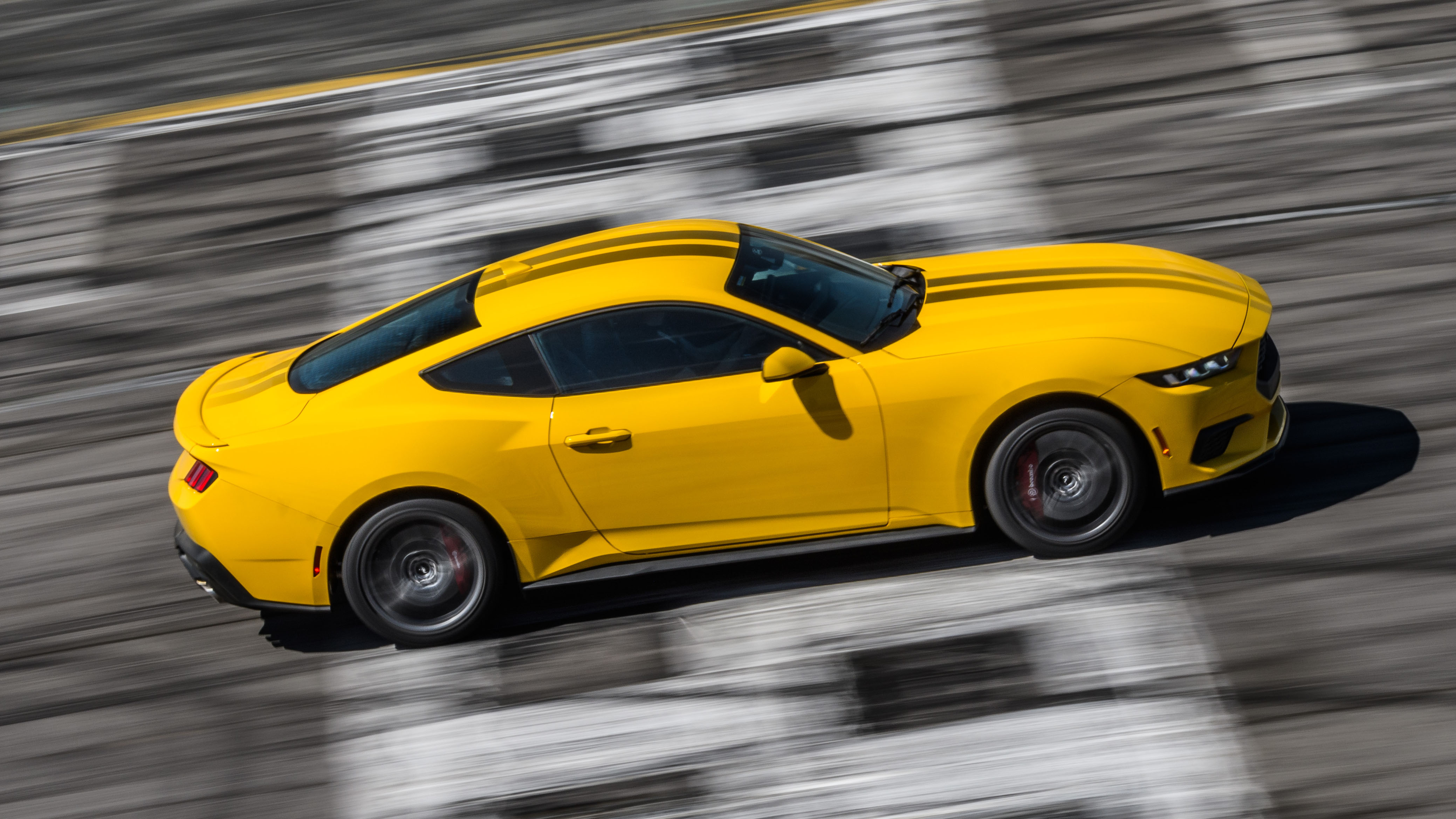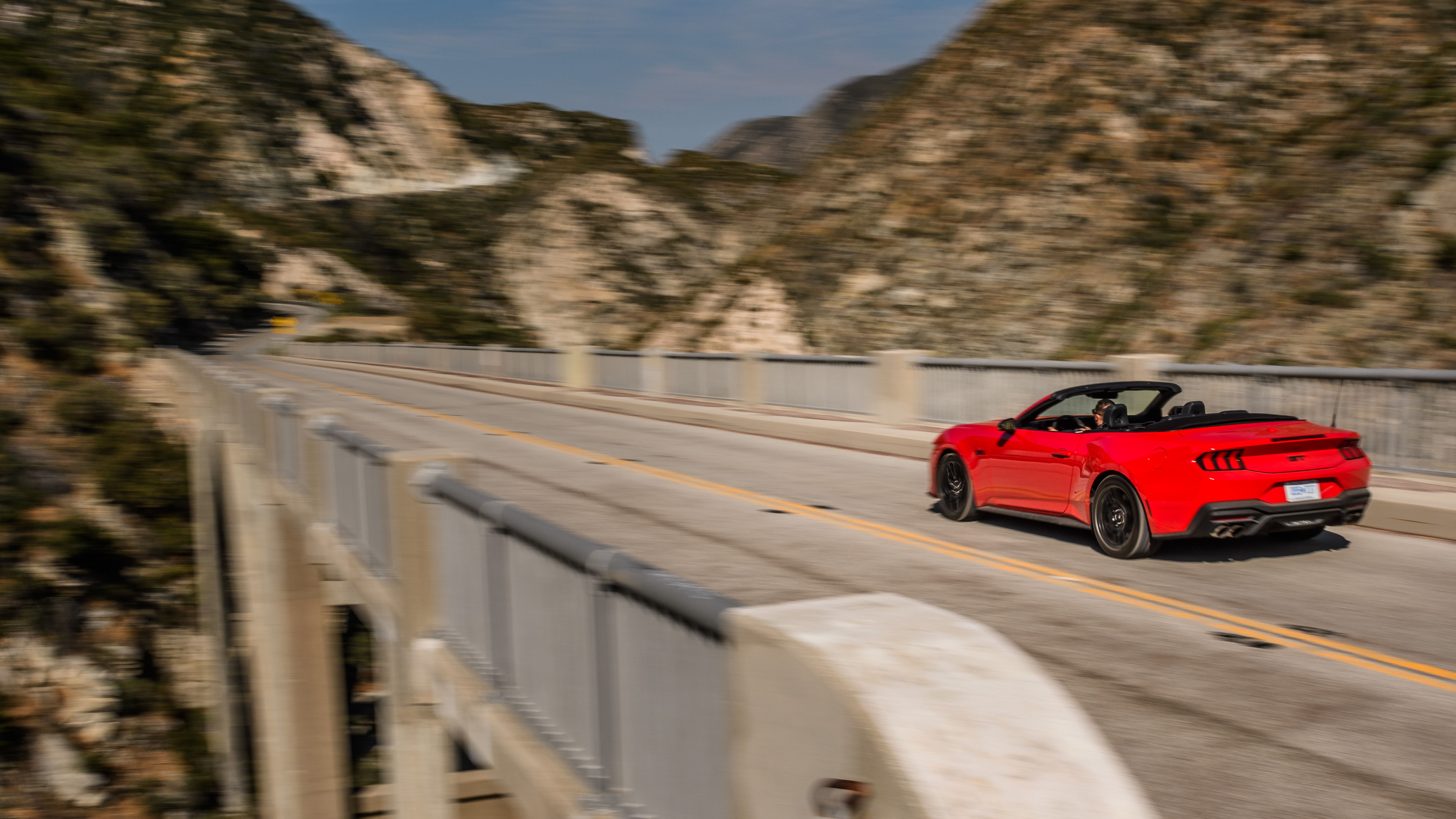
Ford Mustang (US) review
Good stuff
Rippin’ V8 engine, impressive cabin tech, surprisingly agile
Bad stuff
Looks worse than before, best features don’t come cheap, no manual with the turbo engine
Overview
What is it?
It’s the Ford Mustang, brah. It’s Ford’s high-revving, tire-smoking, rental-car-counter-ruling, Cars-&-Coffee-terrorizing icon. But it’s also a surprisingly well-honed performance machine, and with each new iteration, the Mustang’s become less of a straight-line warrior and more of a proper sports car. Now in its seventh generation, the Mustang is better than ever.
Is it really all that different from before?
Not really. The Mustang relies on the same basic formula: big engine up front, rear-wheel drive, two doors, and both coupe and convertible body styles. The engines actually carry over from the previous Mustang, albeit with a few meaningful upgrades.
Instead, the biggest changes are cosmetic. You'll notice the new front fascias – the EcoBoost, GT, and Dark Horse all have unique looks – and the redone rear end, which is a bit chunkier than before and can be had with the requisite tacky spoiler. The overall look is pure muscle car, but perhaps a little less obviously Mustang. In fact, two different people asked us if it was a Camaro. Yikes.
Even bigger changes are found in the cabin, where the Mustang gets a major multimedia tech overhaul, and tons of new creature comforts to make it easier to drive every day. There’s a wealth of new driver-assistance tech packed into the ‘Stang, as well. Here’s hoping the more ham-fisted Mustang drivers actually use them.
The Mustang GT still has a V8, right?
Look, Ford might be gung-ho on electrification, but the company isn’t daft. Of course the Mustang is still powered by Ford’s big 5.0-liter naturally aspirated Coyote V8 engine, cranking out a healthy 480hp and 415lb ft of torque. If you spec the active exhaust setup, you even get a teensy bit more power: 486hp and 418lb ft, not that you’ll notice such a minor uptick.
A six-speed manual transmission is standard with the V8 – as it should be – and Ford’s stick-shift has nifty features like no-lift upshifting and automatic rev-matching downshifts. For the manual-averse, the Mustang GT can be optioned with a 10-speed automatic transmission, and while Ford’s 10-box is a good one, we can’t imagine ordering a ‘Stang without a stick. It’s like getting a cheeseburger without fries. No way.
What's this Dark Horse you speak of?
That's the most Mustang-y Mustang, and while it’s not a full Shelby-strength stunner, the Dark Horse effectively replaces the previous-gen Mach 1.
The Dark Horse uses the same 5.0-liter V8 as the Mustang GT and has slightly more power: 500hp and 418lb ft. However, the major improvements are found elsewhere. New shocks, a bigger rear sway bar, large Brembo brakes, a Torsen limited-slip diff, and Ford's MagneRide suspension – something available on the GT – are all standard.
On top of that, the Dark Horse comes with the awesome Tremec TR-3160 six-speed manual transmission used in the old Shelby GT350, which is an absolute chief's kiss as far as DIY gearboxes are concerned. Honestly, the transmission alone is reason enough to get this most-expensive Mustang. You can add the 10-speed auto, but why?
Adding a $4,995 Handling Package upgrades the Dark Horse's rolling stock to 19-inch wheels wrapped in fat 10.5-inch front and 11-inch rear Pirelli Trofeo R tires. This not only helps with handling, it sends more road-level feedback through the steering, too. That's a good thing, since the Mustang's steering, um, kind of sucks. It's too light and incredibly numb. Not great for a sports car.
What about the EcoBoost?
It’s still here, and a worthy thing to consider if you don’t need V8 power. The 2.3-liter inline-4 has 315hp and 350lb ft of torque, and a twin-scroll turbocharger keeps off-the-line lag to a minimum. Honestly, the EcoBoost engine has always been a sweetheart in the Mustang, so don’t think of it as a downgrade. The smaller engine shaves 244 pounds from the Mustang’s curb weight, too, which ain’t nothin’.
But there’s a problem: the turbo engine forces you to get the 10-speed automatic. There’s no more turbo/manual combination – at least, not yet, anyway – which is a big bummer, because we always loved the combo of strong low-end torque and being able to row our own gears. Oh well.
What’s Ford done to make the Mustang more agile?
The steering ratio is quicker than it used to be, and if you opt for the Performance Pack – available with either engine – you get a limited-slip rear differential, larger Brembo brakes, wider wheels and tires, and a strut tower brace. On top of that, you can add Ford’s MagneRide active suspension, which is a particularly trick bit of tech that constantly adjusts the dampers depending on road conditions. This makes the Mustang comfy on flat highways but it’ll go through corners with way more poise than you’d expect from a pony car. We wouldn’t buy a Mustang without it.
But I don’t care about agile. I want to drift and do burnouts. Big burnouts.
Hey, pal, we all do. And don’t worry, Ford knows its clientele. In fact, the company’s made it easier than ever to pull off all kinds of shenanigans. The line-lock function holds the front brakes in place so you can light up the rear tires, and if you add the Performance Pack, you get a funky new electronic parking brake that looks like a legit handbrake, which better allows you to modulate rear-end braking making it much easier to drift. It’s pretty slick.
How much more expensive is the new Mustang?
Not much, honestly. The EcoBoost version is a little more expensive on the base end, starting at $32,515 including a $1,595 destination charge. You can’t get into a V8-powered Mustang for less than $44,090, and that holy-smokes Dark Horse will cost you $60,865.
What's the verdict?
After all these decades, the Ford Mustang has evolved from a traditional drag-strip pony car to a bona fide sports car that balances power with precision. Can it still do smokey burnouts? And will it still drift? You bet. But the Mustang’s newfound agility gives it appeal beyond the traditional muscle car set.
It’s not just a weekend toy, either. The Mustang is available with the same great driver-assistance tech you’ll find in Ford’s other cars, along with a seriously impressive cabin tech roster, and a raft of creature comforts. It’s never been easier to consider a Ford Mustang as a daily driver.
Featured

Trending this week
- 2026 TopGear.com Awards
The very best cars of the year: welcome to the 2026 TopGear.com Awards
- Long Term Review
Six-month verdict: should you buy a Jaecoo 7?






